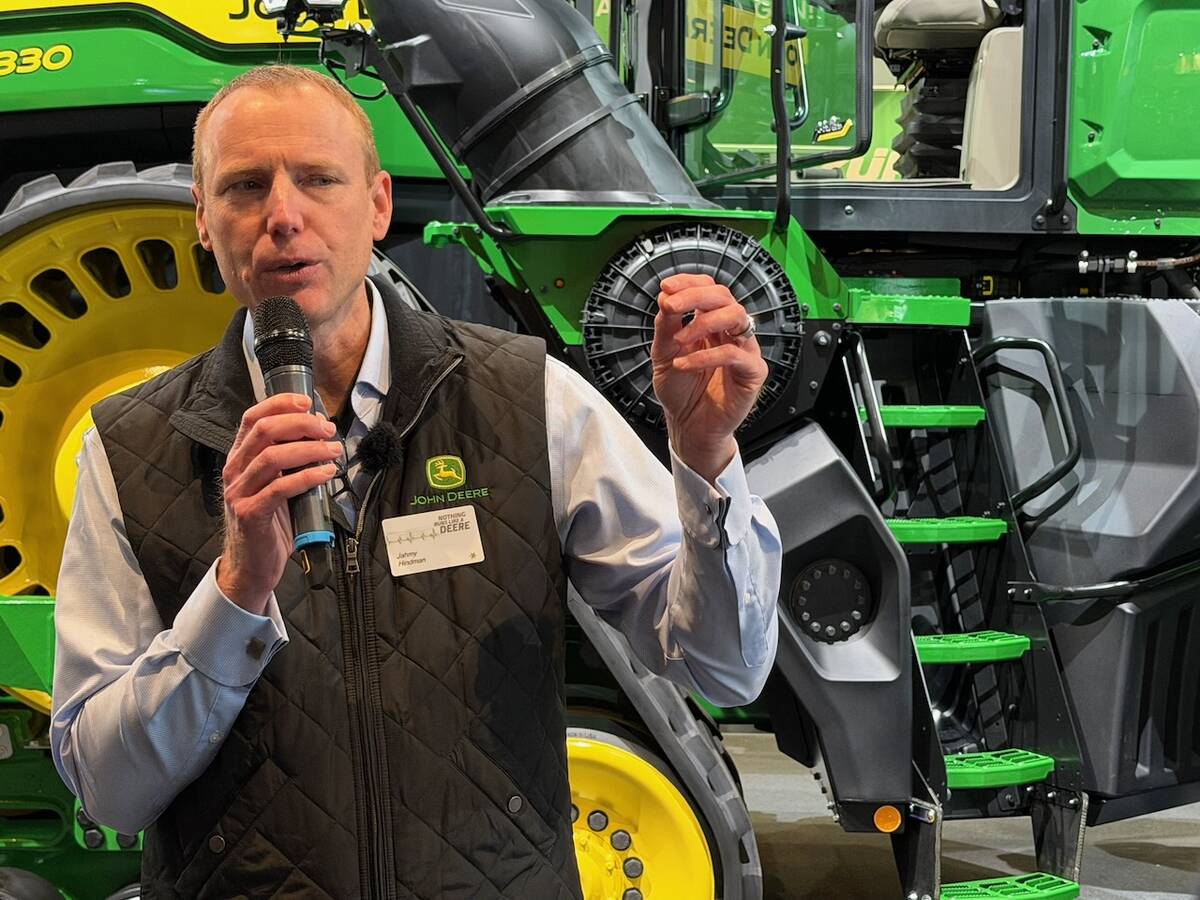Contrary to popular belief, the idea of stuffing grain into big poly bags originated in Saskatchewan and not Argentina.
Brothers Jules and Gerard Clavelle built the world’s first grain bagger on their farm at Viscount, Sask., in 1982, according to plastics specialist and longtime family friend Mike Lynch.
“They had too much barley and were going to have to dump it on the ground,” said Lynch, himself a poly bag retailer.
“But their father said, ‘no,’ so Jules and Gerard had a little problem. They struck on the idea of putting grain into a silage bag. A couple days in the shop and they had the world’s first bagger. That was long before anyone in Argentina ever thought about it.”
Read Also

Agritechnica Day 1: New equipment, automation steps and Canada’s moment
Canadian companies have a larger-than ever presence at Agritechnica 2025. Also, farm automation spreads across many farm equipment companies.
Jules Clavelle said that’s pretty much the way it happened. That fall they had two Harvestores full of silage and another full of barley, with a lot of barley still standing in the field.
“So we looked at one of those silage baggers and took the tunnel measurements. We went back to the shop and a couple days later, we had the first draft built,” he said.
“We tried it out and realized we needed an auger to travel forward with the truck as the machine moves along. So we took a couple more days to rebuild it with an auger.…That first machine is still in use today.”
The Clavelles weren’t manufacturers so they had a shop in Colonsay, Sask., build a limited number for local sale. It wasn’t long before knockoff versions began appearing.
Clavelle said they received a few commission cheques in the early years, but that dried up quickly.
“In 1990, we had Colonsay build us four baggers for Alberta Ag Industries to sell in Russia, but they only loaded three into the container.
“Somehow, they sold the fourth bagger to Argentina, and that’s where the whole thing just took off. We lost all control. We should have patented the curvature of the tunnel right away. That’s the key element that makes it work. But we didn’t think of it at the time. Now it’s too late.”















